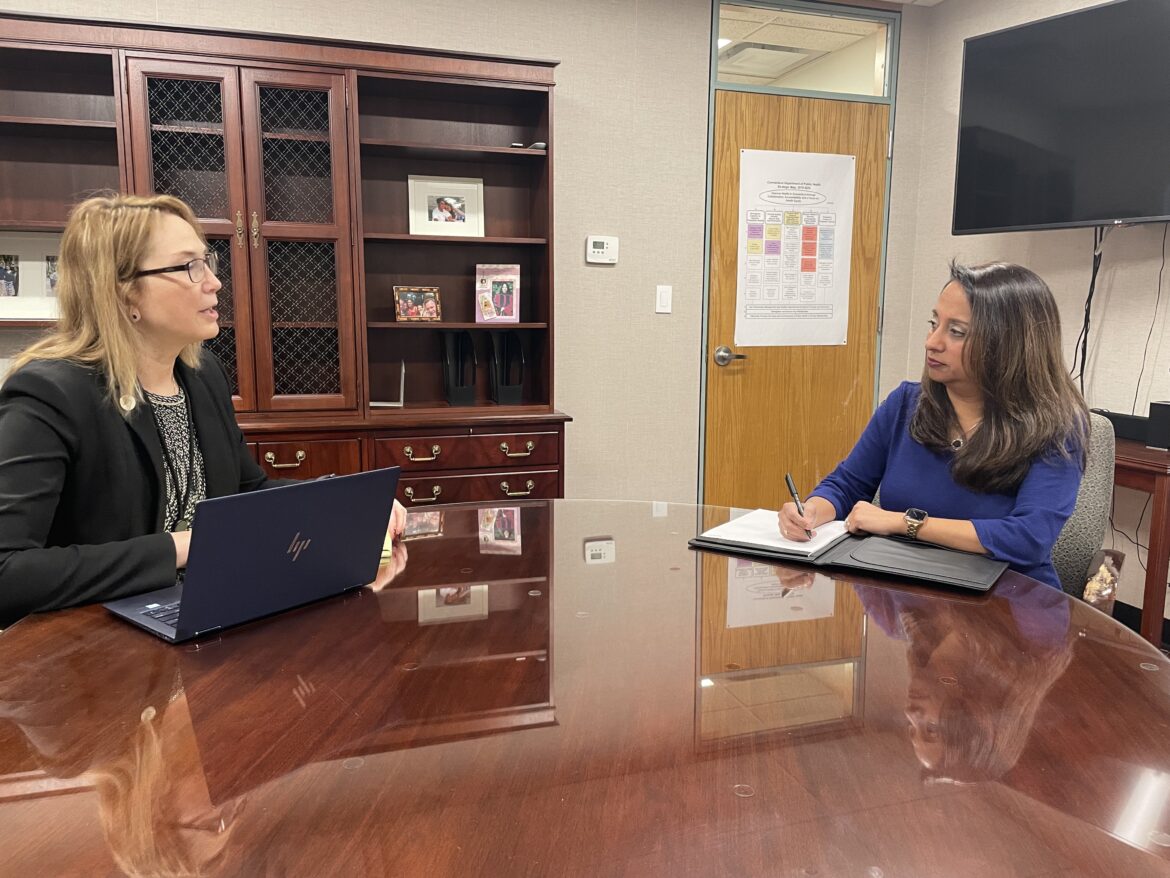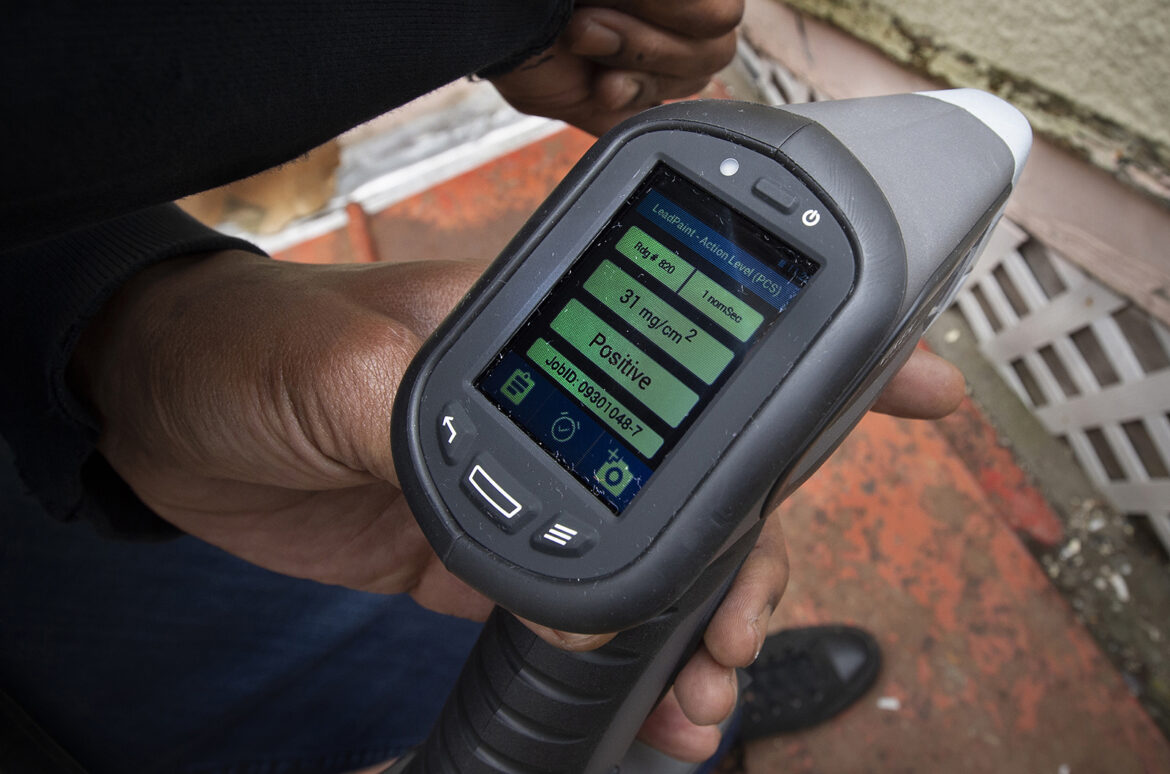After decades of inertia, Connecticut is finally moving to help its thousands of lead-poisoned children and prevent thousands of other young children from being damaged by the widespread neurotoxin.
The state will direct most of its efforts — and most of $30 million in federal money — toward its cities, whose children have borne the brunt of this epidemic. In announcing the allocation recently, Gov. Ned Lamont pointed to lead’s “catastrophic” effects on children’s health and development, noting that lead poisoning is “a problem that impacts most deeply minority and disadvantaged communities of our state.”
Nearly half of the 1,024 children reported as lead poisoned in 2020 lived in New Haven, Bridgeport, Waterbury, Hartford, or other cities, according to state Department of Public Health numbers.

DPH Photo.
“The money is necessary to address a problem that is a wrong of the past,” said Manisha Juthani, MD, commissioner of the state Department of Public Health. “We need to do better in the state of Connecticut.”
The more enduring thrust of the state’s new actions, however, is the strengthening of its outdated lead laws, starting in 2023. The changes will increase early interventions by:
• Gradually lowering the blood lead levels that trigger parental notifications.
• Lowering the blood lead counts requiring home inspections.
• Requiring more frequent testing of children who live in areas where lead exposure is more common.
Under current law, parental notifications aren’t required unless a child’s blood lead level is 5 micrograms per deciliter or higher. Starting Jan. 1, 2023, the trigger for parental notifications will be 3.5 micrograms, the standard adopted by the American Academy of Pediatrics and the U.S. Centers for Disease Control and Prevention. If the state had used the CDC’s new measurement of 3.5 micrograms in 2020, the number of Connecticut children considered lead poisoned would triple to 3,000.
More significantly, perhaps, is that by Jan. 1, 2025, investigations into where and how a child has been poisoned will drop from the current trigger of 20 micrograms per deciliter to 5 micrograms per deciliter.
‘It’s A Start’
The $30 million for lead poisoning relief is from the state’s share of the 2021 American Rescue Plan Act (ARPA), the Biden administration’s COVID-19-relief legislation.
Department of Public Health Commissioner Manisha Juthani, MD, said the funds will be spent largely on remediating housing found to be the source of a child’s poisoning.
Abating a single home or apartment can cost between $12,000 and $15,000, Juthani said, adding that the ARPA money will remediate more than 1,500 housing units.
“It’s a start,” she said. “This may not remove the problem altogether, but the hope is that we can make a … dent.”
“We’re going to continue to explore funding opportunities that may be federal, that may be with other partners,” Juthani said. “This is always going to be an ongoing priority.”

DPH Photo
Lori Mathieu, DPH public health section chief, discusses the state’s lead abatement plans with Commissioner Juthani.
The federal government approved a bipartisan infrastructure measure in 2021, allocating $3 billion over the next five years to cover the costs of replacing lead-lined water pipes throughout the country.
Connecticut and the other states are conducting inventories to identify pipes that need to be replaced. “Right now, we have about 18,000 on a list of possible lead service lines,” said Lori Mathieu, DPH public health section chief.
Leaded water pipes cause about 20% of all lead poisoning cases in the state; nearly every other case is linked to leaded paint.
Lead Paint In Housing
Until it was banned in 1978, for more than a half-century, lead was added to house paint to boost its durability. Even painted over, it remains on the walls of older apartment buildings and homes. As the paint inevitably deteriorates, leaded chips and paint dust can be ingested by crawling babies and toddlers who, during this peak period of brain development, typically explore their new worlds using hand-to-mouth activities.
Once in the bloodstream, the heavy metal can cause permanent cognitive problems, including a measurable loss in IQ points, hearing loss, developmental delays, learning disabilities and hyperactivity.
For years, Connecticut law lagged behind the scientific findings that ever-smaller amounts of lead can cause irreversible harm to young children.
In testimony before the Public Health Committee in March, doctor after doctor described the dire and discriminatory landscape of lead poisoning.
“As a pediatrician who cares for children with lead toxicity, I have seen firsthand the devastating and long-term health effects that lead poisoning has on the physical and mental health of young children, in particular those under the age of 6.”
— Erin Nozetz, MD, chair of the New Haven Lead Task Force
“Right now, in Connecticut,” Nozetz said, “the risk of a child being poisoned and the response to that poisoning depends on the town that the child lives in. We also know that children from underrepresented minority populations are disproportionately affected by lead toxicity. I don’t know about you, but this infuriates me.”
Waterbury’s Efforts
Connecticut cities have some of the oldest housing in the country. Larger cities may each have well over 10,000 housing units built before lead paint was outlawed.
Waterbury has more than 14,500 such units, and the city consistently has some of the highest numbers of lead-poisoned children in the state, state DPH reports show.
The Brass City reported 81 lead-poisoned children under 6 in 2020, which is certainly an undercount because of the pandemic, said Public Health Director Aisling McGuckin. In 2018, the year before COVID-19 hit, Waterbury reported twice as many lead-poisoned children.
“Waterbury is predominantly a renter city,” McGuckin said. Healthy Homes, the federal program created to eliminate housing-related environmental hazards, has done a lot of work in the city, she said. But much work remains, as well as challenges, she said.
“Landlords can be hard to contact” if an apartment unit or home needs lead remediation, McGuckin said, so “families don’t have a lot of control.”
And there are the logistics involved in the numbers of children and families needing help.
In testimony urging passage of the lead legislation, McGuckin wrote, “Currently in Waterbury, we have two staff managing the lead case management work. In FY 2021, we had over 1,000 cases that under the proposed blood lead level limits would have provoked an investigation and follow-up.”
A Modernized System
New Haven was embroiled in a class-action lawsuit for over two years after the city quietly changed its criteria for investigating lead-poisoned children. Two top health officials, including the department’s director, left. Last summer, a state judge agreed with the New Haven Legal Assistance Association, which had brought the lawsuit, that New Haven was in the wrong.
When the new mayor, Justin Elicker, hired Bridgeport’s public health director to fix the embattled health department, Maritza Bond said she would involve a broad spectrum of the community in her efforts, including lawyers from New Haven Legal Assistance.
“We’re in an excellent position,” Bond said. “We’ve modernized systems. We have a lead dashboard. We’re tracking cases, updating them daily.” The department’s website contains maps highlighting areas with high numbers of lead cases.
The lead program is almost fully staffed. “In two years, we’ve gone from two inspectors to five, and we’re hiring for a sixth,” said Bond, who is running for secretary of the state.
And New Haven is inspecting the homes of lead-poisoned children whose blood lead levels are 5 micrograms per deciliter or higher. The state won’t require that until 2024.
To view the 2018 and 2019 childhood lead reports go here.
Scroll below to read the 2020 childhood lead poisoning report.
